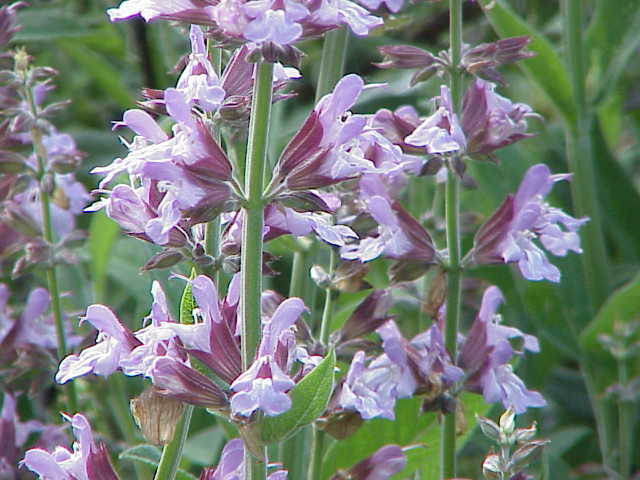
courtesy Wikimedia Commons, public domain
Hi-res image: https://upload.wikimedia.org/wikipedia/commons/5/5a/Salvia_officinalis0.jpg
Sage was a common herb and garden plant in Europe. Widely used for both culinary and medicinal purposes, it was brought along by the settlers to New Netherland.
Sage was used for one’s general health, but also for specific medical conditions. According to contemporary descriptions, sage could improve memory, increase a woman’s fertility, and when combined with honey, clean “vomit blood.” In addition, sage was celebrated for its culinary uses. With its strong, earthy flavor and fragrant aroma, sage was a versatile herb in any kitchen and mentioned as present in New Amsterdam herbal gardens by lawyer-landowner, Adriaen van der Donck in his 1655 Description of New Netherland:
"The herb garden is also tolerably well supplied with rosemary,
lavender, hyssop, thyme, sage, marjoram, balm, holy onions,
(ajuin heyjig,) wormwood, belury, chives, and clary; also,
pimpernel, dragon’s blood, five-finger, tarragon, (or dragons-
wort,) &c. together with laurel, artichokes, and asparagus,
and various other things on which I have bestowed no
attention."
Once taken out of the garden, dried sage would have been stored in glass and porcelain jars kept in drawers or shelves in kitchens or apothecaries – such as Hans Kierstede’s Apothecary on Pearl Street, New Amsterdam.
According to the English 17th-century herbalist John Gerard, who copied the widely used late 16th-century Dutch herbal by Flemish botanist-physician Rembert Dodoens, there were six main types of sage: Great Sage-Salvia major; Small Sage-Salvia minor; Indian Sage-Salvia Indica; Mountain Sage-Salvia Alpina; Apple-bearing Sage with Candy-Salvia Crectica pomifera; and Candy Sage without Apple -Salvia Creticanon pomifera, showing the great variety and popularity of this plant.

